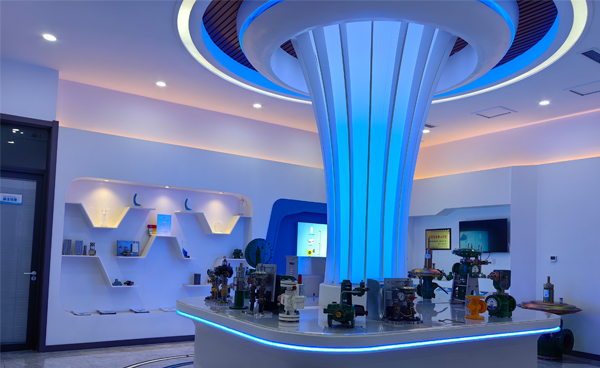
Oct . 12, 2024 01:15
Back to list
Natural Gas Heat Exchanger Design and Efficiency Optimization Techniques for Industrial Applications
Understanding Natural Gas Heat Exchangers Efficiency and Application
Natural gas heat exchangers play a vital role in various industrial and residential applications by efficiently transferring heat between different fluids. These systems are essential in maximizing energy efficiency, reducing operating costs, and maintaining environmental standards. This article will explore the fundamentals of natural gas heat exchangers, their types, benefits, and common applications.
What is a Heat Exchanger?
A heat exchanger is a device designed to transfer heat from one medium to another without mixing the two. In the case of natural gas, heat exchangers are utilized to transfer heat from the combustion of gas to either air or water, which can then be used for heating purposes. This process not only increases energy efficiency but also captures waste heat that would otherwise be lost.
Types of Natural Gas Heat Exchangers
Natural gas heat exchangers can be categorized based on their design and operational principles. Here are the most common types
1. Shell and Tube Heat Exchangers This type consists of a series of tubes, one set carrying the hot fluid (in this case, combustion gases) and the other carrying the cooler fluid (such as water). Heat is transferred between the two fluids through the walls of the tubes, promoting efficient thermal exchange.
2. Plate Heat Exchangers Comprising thin, corrugated plates arranged in a frame, plate heat exchangers provide a large surface area for heat exchange in a compact design. They are particularly effective in applications where space is restricted and offer superior heat transfer efficiency compared to other types.
3. Air Cooled Heat Exchangers These units use ambient air to cool the fluid (often steam or hot water). They're widely used in gas-fired power plants and are favored for their efficiency, low maintenance requirements, and ability to operate without additional cooling water sources.
4. Double-Pipe Heat Exchangers This simpler design consists of one pipe inside another. The hot fluid flows through the inner pipe while the cooler fluid moves through the outer pipe. Though less efficient than shell and tube designs, double-pipe exchangers are easy to construct and maintain.
Advantages of Natural Gas Heat Exchangers
natural gas heat exchanger

1. Energy Efficiency By recovering waste heat, natural gas heat exchangers enhance the overall efficiency of heating systems. They reduce the amount of natural gas needed to generate heat, leading to lower utility bills and reduced carbon emissions.
2. Cost-Effective The initial investment in a heat exchanger can be recouped over time through savings on fuel costs. Additionally, many manufacturers design these systems for durability, requiring minimal maintenance and repairs.
3. Environmental Benefits Utilizing natural gas as a fuel source offers a cleaner alternative to other fossil fuels. Incorporating heat exchangers further reduces greenhouse gas emissions, aligning with global efforts to combat climate change.
4. Versatility Natural gas heat exchangers are suitable for various applications, from residential heating systems to large-scale industrial processes. Their adaptability makes them a valuable choice in many sectors.
Common Applications
Natural gas heat exchangers are used in a variety of settings, including
- Residential Heating In home heating systems, heat exchangers transfer heat from gas-fired furnaces or boilers to water or air, ensuring efficient indoor heating.
- Power Generation Natural gas power plants utilize heat exchangers to improve efficiency by recovering heat from gas turbines, which can be used to produce steam for additional electricity generation.
- Industrial Processes Many manufacturing processes that require heat will employ natural gas heat exchangers to maintain optimal temperature conditions, enhancing productivity and safety.
Conclusion
Natural gas heat exchangers are indispensable components in today's energy landscape, promoting efficiency, cost savings, and environmental sustainability. As technology advances and energy demands increase, the importance of these systems will only grow. Their versatility across various applications, combined with the benefits they offer, positions them as a key player in the transition to cleaner energy solutions. Investing in advanced heat exchanger technology is not only a step toward efficient energy management but also a commitment to building a sustainable future.
Latest news
-
Safety Valve Spring-Loaded Design Overpressure ProtectionNewsJul.25,2025
-
Precision Voltage Regulator AC5 Accuracy Grade PerformanceNewsJul.25,2025
-
Natural Gas Pressure Regulating Skid Industrial Pipeline ApplicationsNewsJul.25,2025
-
Natural Gas Filter Stainless Steel Mesh Element DesignNewsJul.25,2025
-
Gas Pressure Regulator Valve Direct-Acting Spring-Loaded DesignNewsJul.25,2025
-
Decompression Equipment Multi-Stage Heat Exchange System DesignNewsJul.25,2025

